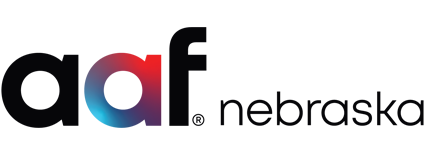 Contributed by Teonne Wright, AAF Omaha Board Member & Education Committee Co-chair
Contributed by Teonne Wright, AAF Omaha Board Member & Education Committee Co-chair
In case you missed it, Megan Rose Dickey of Techcrunch.com, posted a column titled ‘Pinterest Hires Its First-Ever Head Of Diversity’. Read more below.
Pinterest has hired Candice Morgan, formerly of Catalyst, to work as the unicorn startup’s first-ever head of diversity. In her role, Morgan will “help build the programs and teams” Pinterest needs to reach its “creative potential as a company,” Pinterest co-founder Evan Sharp said in a statement.
This announcement comes shortly after Twitter hired Jeffrey Siminoff, a gay, white man to replace a white woman as the company’s head of diversity, which upset some people because he’s not black. In addition to that, he previously led diversity efforts at Apple, a company where diversity is less than ideal. During his time as head of diversity at Morgan Stanley, the firm was the defendant of a racial discrimination lawsuit.
Morgan is a black woman. She has ten years’ worth of experience building diverse and inclusive work environments through her work at Catalyst, so it’s safe to say that Pinterest didn’t hire Morgan simply because she is black. But, is it more acceptable to hire a black woman than a white man for a head of diversity role? I don’t know the answer to that, but wanted to put the question out there.
But, perhaps there is no one answer to who is the best fit to fill a diversity role. It might be a case of needing to factor in the entire employee base at the company in order for the role to be as effective as it can be. Meanwhile, others have argued that diversity needs to start at the very top, and that it needs to be a priority for every single employee.
“Selecting anyone else, besides the CEO, to run Diversity and Inclusion in the current tech environment is just another half-assed diversity initiative,” Slack build and release engineer Erica Baker wrote on Medium, after Twitter hired Siminoff to lead the diversity and inclusion team at Twitter.
In addition to hiring a head of diversity and inclusion, Pinterest has launched two programs, The Pinterest Apprenticeship Program and Pinterest Engage for engineers from non-traditional tech backgrounds or underrepresented backgrounds.
The apprenticeship program, which starts this quarter, is geared toward people without traditional backgrounds in things like computer science to see what it’s like to be an engineer at Pinterest. The apprenticeships are one year long, with opportunities for long-term employment. Pinterest Engage is an eight-week summer internship program for first-year college students from underrepresented backgrounds studying computer science, computer engineering, software engineering or other related technical majors.
But it turns out that diversity initiatives can be threatening to white people, according to a recent study, and make them believe that women and minorities are being treated fairly. Diversity efforts also don’t necessarily help someone from an underrepresented group to feel more included and less at risk for discrimination.
“The implications of this study are troubling for the ways we currently attempt to manage diversity and foster inclusion in our organizations,” the authors of the study, Tessa L. Dover, Cheryl R. Kaiser and Brenda Major, recently wrote on the Harvard Business Review. “Groups that typically occupy positions of power may feel alienated and vulnerable when their company claims to value diversity. This may be one explanation for the lackluster success of most diversity management attempts: when people feel threatened, they may resist efforts to make the workplace more inclusive.”
The solution, the study says, is to employ data-driven, research-based strategies with measurable goals — something Pinterest is working on with diversity and inclusion strategy startup Paradigm.
In July, Pinterest announced its partnership with Paradigm, its plan for a more diverse company, and it set the following goals: increase hiring rates for full-time engineering roles to 30 percent female, increase hiring rates for full-time engineers to 8 percent from underrepresented ethnic backgrounds; increase hiring rates for non-engineering roles to 12 percent from underrepresented backgrounds; and implement a Rooney Rule requirement where at least one person from an underrepresented background and one female candidate is interviewed for every open leadership position.
Company-wide, Pinterest is 49 percent white and 43 percent Asian in the U.S., and 58 percent male worldwide. In leadership roles in the U.S., 47 percent of top-level employees are white, 42 percent are Asian and 0 percent are black or Hispanic.
To see the original article, please click here.



